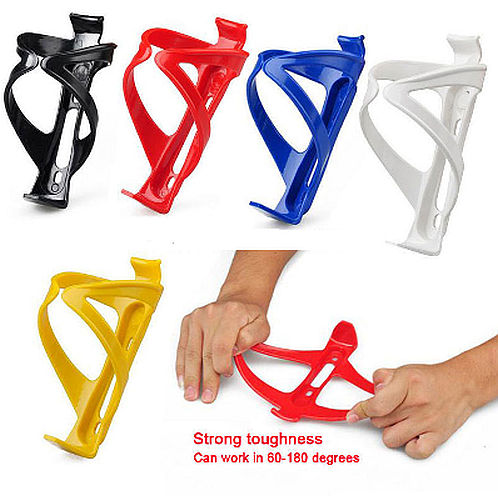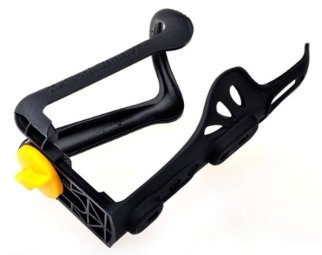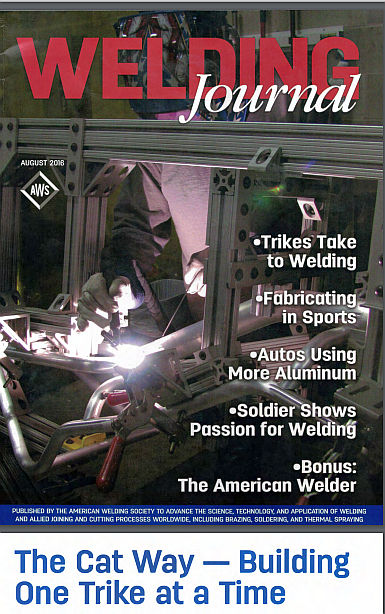
Tire liners … do they work? Well …………………………….. yes and no. Once more it all depends. I used to use them and as far as helping prevent externally caused flats, yes they work. However, I and a couple of friends who also used them found that they caused flats internally. Also the service dept. manager of a local bike shop has told me that he agrees that they do indeed cause internal flats and thus won’t use them or recommend them. Now there are things which can be done to help prevent this from happening. Unfortunately we did not do any of it so we got occasional flats as a result. I would think that there should not have to be any thing done extra such as this for the tire liners to work properly and not cause internal flats. Now that I use the best tire money can buy I no longer use tire liners as I don’t need them. That being said when I first switched to the Schwalbe Marathon Plus tires I installed the tire liners initially as I already had them and had been using them for a few years on all the various tires I had tried previously. I thought it would be a good idea to have the extra measure of protection. Big mistake! I got about three flats over a period of a few years. All were internally caused flats. When I replaced the inner tubes I removed the tire liners. I have not had any flats since.
So my advice is if you are going to use a regular tire prone to getting flats the tire liners are a good thing. If you are going to use them either sand the end of the tire liner where it overlaps itself to remove any sharpness or use duct tape to help protect the inner tube from any sharpness on the end. Personally I would do both … sand the end and use the duct tape.

And be sure the end is rounded as this will help with the edge the inner tube comes in contact with.
Lastly with or without tire liners I highly recommend using a generous amount of talcum (corn starch baby) powder inside the entire surface of tire and on the entire surface of the inner tube to reduce rubbing and abrasion which cause ‘internal’ flats. Put the talcum powder inside of the tire after the tire liner is in place.
Definitely there is “abrasion” which occurs when tire liners are used. Take a look at this picture.

You can plainly see the outline of the tire liner on the inner tube. Notice the sharp line of the end of the tire liner where it overlaps itself. Again, using duct tape on the end will greatly reduce this. As to the use of duct tape some say to put it over the end which overlaps. Some say put it on both ends. I see no reason to put it on both ends as it is only that which is in contact with the inner tube which is a concern. I would only put it on the overlap area. Here is one way to do it … wrap it around the top and bottom of the tire liner and then trim the duct tape to the rounded end shape.

I wonder if it would not work better to just place a piece of duct tape over the overlap once the tire liner is in place inside of the tire. That way there would be less thickness at the overlap so that the overlap would not protrude out as far into the inner tube. I see no advantage to having tape on the bottom side of the tire liner since it is not in contact with the inner tube. Also the tape on the overlap would help hold the tire liner in position inside of the tire. The end which overlaps tends to want to drop away from the rest of the tire liner once it is up inside of the tire so I think it would be very helpful to place duct tape over the overlap.

To the best of my knowledge there isn’t all that much difference in quality and protection offered between the various brands of tire liners. I have read that the Kevlar liners should not be used as they don’t work very well. Stick with the plastic type such as Mr. Tuffy, Rhino Dillos, Stop Flats 2, Zefal, and Slime. As you can see in the picture above they are pretty tough.
I think that with the exception of Rhino Dillos all of the tire liners come packaged all rolled up tightly in a small coil/roll. In doing so the inside end is all curled up and presents problems when trying to work with it to install it. So because of this I recommend buying the Rhino Dillos as they are packaged so that this doesn’t happen. They are rolled up in a larger diameter. If you buy one of the other brands it is best to take it out of the packaging and hang it up by the small inside curled end (if it is one rolled from the end) so that it can straighten out for a day or two before installing it.

If it is one rolled from the middle like pictured below then, of course, you should hang it from the end (either end).

Again, my thinking is the worst way of packaging these tire liners is to fold them in half and then roll them up like the red one pictured above. If I were buying any I would steer clear of any packaged like that.
I myself have only used Mr. Tuffy tire liners, which is the originator of tire liners. They are made of made of durable, lightweight polyurethane. They also have what they say is a lighter weight product for those who are weight conscious/concerned. They claim that their liners will not cause tire or tube damage. I take issue with that as I consider causing internal flats as “damage”. Whether the hole is the result of a puncture from the outside or abrasion on the inside it is still damage and has the same consequences … a flat and a destroyed inner tube.
Tire liners come in different widths since tires come in different widths so be sure you get the correct width for the tires you are using. They also come in “XL” for FAT tires.
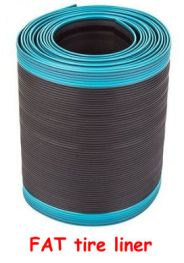
As to installing tire liners you will find different methods and suggestions ‘out there’.

Some say to remove the tire and inner tube completely off of the rim so you can install the tire liner inside of the tire off of the rim. That is the way I have always done it. Some say to leave the tire and inner tube on the rim and just remove one side of the tire off of the rim so you insert the tire liner between the tire and inner tube. Some say to remove one side of the tire off of the rim and remove the inner tube. Certainly it can be accomplished in any of these ways. It is important, of course, to ensure that there is nothing sharp inside of the tire or rim before installing the tire liner. That is best and easiest accomplished by removing both tire and inner tube off of the rim. It is also important to be sure the tire liner is centered inside of the tire and that the inner tube is installed correctly with no twists or other abnormalities.
Here is what Mr. Tuffy shows as to how to install the tire liners:

I found it interesting that their instructions say to remove any debris found inside of the tire casing before the inner tube is removed. How in the world are you supposed to check inside the tire casing without first removing the inner tube? DUH!
I personally much prefer to take the tires completely off of the rims to install tire liners. Doing them while still on the rim one can not nearly as easily tell where the tire liner is positioned as far as getting it centered in the tire. Of course, no matter how one goes about it there is always the chance that the tire liner will move out of position during final assembly and re-inflating the inner tube.
Another good reason for removing the tire completely off of the rim is one can much more easily and thoroughly examine the casing of the tire and do anything needed to ensure the tire is fit and ready to use.
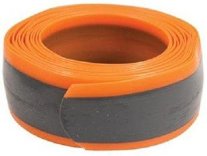
The side of the tire liner that has the extra layer of material bonded to it (it is usually darker color like shown above in the picture) goes outward toward the tire.
I watched several videos on installing tire liners and quite frankly I was not very impressed by any of them. I settled for this one to use here.
Well, like ol’ Forest Gump … that’s all I have to say about that. Tire liners? … Use them if you need them. As for me, I am going to just continue to use the best tire money can buy and not concern myself with flats. My Mr. Tuffy tire liners are hanging up on the garage wall. I will probably never use them again. It is a real joy to just be able to …
KEEP ON TRIKIN’
and not be concerned about flats. And it is great to get such phenomenal mileage out of the tires as well.
A FREE GIFT awaits you!





















